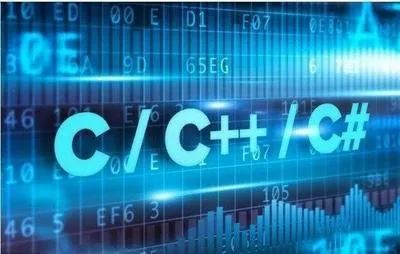In the vast field of programming, the C language is renowned for its efficiency, flexibility, and proximity to hardware. As one of the introductory programming languages, C provides a solid foundation for understanding the basic concepts of computer science. Implementing a simple calculator program is a classic case in learning C, as it helps us master basic input/output, conditional statements, loop control, and function usage, while deepening our understanding of program design logic.

1. Project Overview
This project aims to implement a simple calculator using the C language, which can accept two numbers and an operator input by the user, then perform the corresponding arithmetic operation (addition, subtraction, multiplication, division) based on the operator and output the result. To achieve this goal, we need to design three parts of the program: input, processing, and output.
2. Requirements Analysis
-
1. Input Section: The program needs to be able to receive two numbers (which can be integers or floating-point numbers) and an operator (addition
+, subtraction-, multiplication*, division/) from the user. -
2. Processing Section: Based on the operator input by the user, select and execute the corresponding arithmetic operation.
-
3. Output Section: Output the result of the operation to the user. If the input operator is not a valid arithmetic operator, or if the divisor in division is 0, output an error message.
3. Design Approach
-
1. Data Definition: Define variables to store the two numbers and the operator input by the user.
-
2. Input Handling: Use the
scanffunction to read the data input by the user. -
3. Operator Evaluation: Use a
switchstatement orif-elsestatement to evaluate the operator input by the user and perform the corresponding operation. -
4. Error Handling: Check if the divisor in division is 0 and whether the operator is valid.
-
5. Output Result: Use the
printffunction to output the result of the operation or an error message.
4. Code Implementation
Below is a simple implementation of a calculator program in C:
#include <stdio.h>
int main() {
char operator;
double firstNumber, secondNumber;
printf("Please enter an operator (+, -, *, /): ");
scanf("%c", &operator);
printf("Please enter two operands: ");
scanf("%lf %lf", &firstNumber, &secondNumber);
switch (operator) {
case '+':
printf("%.1lf + %.1lf = %.1lf", firstNumber, secondNumber, firstNumber + secondNumber);
break;
case '-':
printf("%.1lf - %.1lf = %.1lf", firstNumber, secondNumber, firstNumber - secondNumber);
break;
case '*':
printf("%.1lf * %.1lf = %.1lf", firstNumber, secondNumber, firstNumber * secondNumber);
break;
case '/':
// Check if the divisor is 0
if (secondNumber != 0.0)
printf("%.1lf / %.1lf = %.1lf", firstNumber, secondNumber, firstNumber / secondNumber);
else
printf("Error: Divisor cannot be 0.\n");
break;
// If the operator is not one of +, -, *, /
default:
printf("Error: Invalid operator.\n");
}
return 0;
}Code Explanation
-
1. Header File:
#include <stdio.h>is the header file for the C standard input/output library, which includes functions for performing input and output operations, such asprintfandscanf. -
2. Variable Definition:
-
•
char operator;is used to store the operator input by the user. -
•
double firstNumber, secondNumber;is used to store the two operands input by the user, usingdoubletype to support decimal operations.
3. Input Handling:
-
• Use the
printffunction to prompt the user to input the operator and operands. -
• Use the
scanffunction to read the operator and two operands input by the user. Note that when reading a character, a space or other method may be needed before%cto avoid incorrectly reading the previous input (such as a newline character).
4. Operator Evaluation:
-
• Use a
switchstatement to perform different arithmetic operations based on the operator. -
• In the division operation, use an
ifstatement to check if the divisor is 0 to avoid division by zero errors.
5. Output Result:
-
• Use the
printffunction to output the result of the operation or an error message.
5. Extended Features
Although the above program has implemented basic arithmetic operations, we can further extend it to add more features and improve user experience.
-
1. Support Continuous Calculations: Allow users to perform multiple calculations without exiting the program.
-
2. Enhanced Error Handling: In addition to checking for division by zero, also check if the user input is a valid number and if there are any extraneous input characters.
-
3. Support More Complex Operations: Such as exponentiation, logarithmic operations, trigonometric functions, etc.
-
4. Graphical User Interface (GUI): Use graphical libraries (such as GTK, Qt, or Windows API) to create a graphical user interface for the calculator to enhance user experience.
-
5. History Tracking: Save the user’s calculation history so that they can view or reuse previous results.
By implementing a simple calculator program, we not only mastered the basic syntax and structure of C language but also learned how to design programs based on requirements, handle user input, perform arithmetic operations, and output results. This process not only honed our programming skills but also cultivated our logical thinking and problem-solving abilities. I hope this article can be helpful to readers who are learning C or wish to further understand program design.